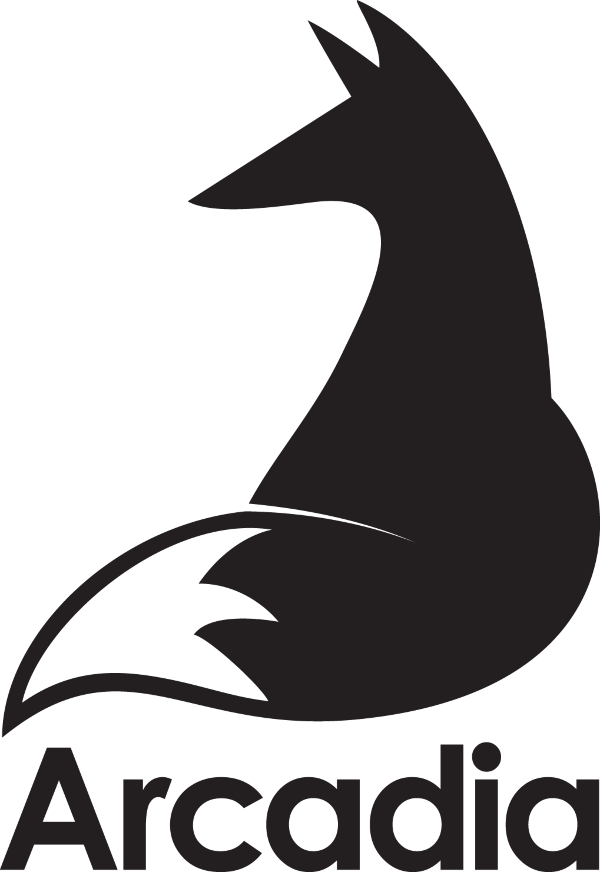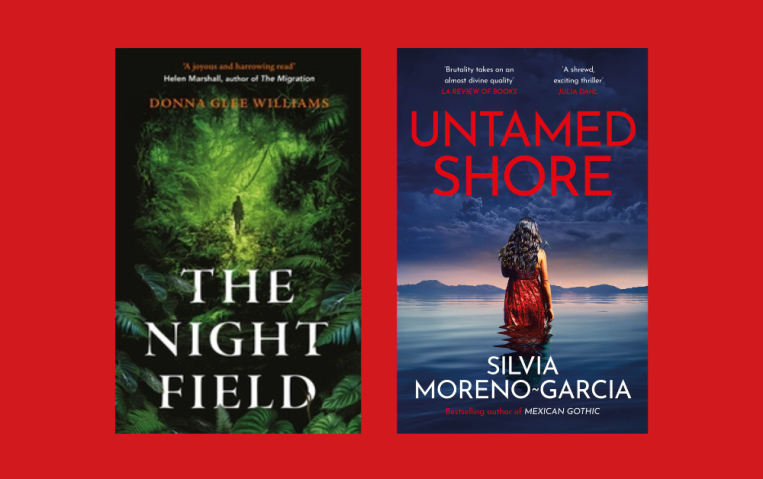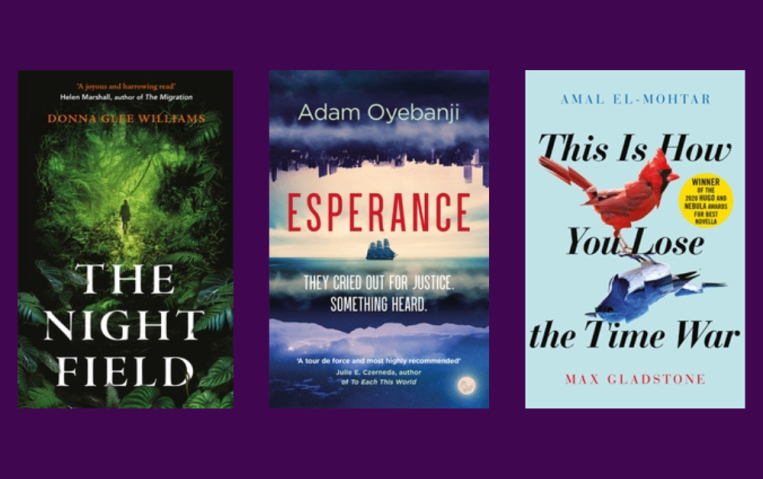Meet E.J. Swift and her beautiful new speculative novel!

We sat down with E.J. Swift, the author of When There Are Wolves Again, to talk all about the inspiration for her extraordinary new science fiction novel about life, hope, and a dream of a time when there are wolves again…
Can you tell us where the kernel of this book came from? The first seed or spark?
I’ve been interested in rewilding for a long time, whether that’s dedicated projects like the Knepp estate in the UK, the incidental rewilding of the Chornobyl Exclusion Zone, or simply how to make a small garden more wildlife-friendly. When I came across the Dogs of Chornobyl programme, which supports veterinary care for feral dogs in the Zone, that sparked something. I also had a short story about a grandmother and her granddaughter, and migratory swifts returning, which I wasn’t sure what to do with. Somehow these two ideas turned into When There Are Wolves Again!
One of my favourite metaphors in the book deals with dislocation between humans and other beings: “A disconnect, a severing of kinship so huge and fundamental it can only be seen when you step sideways.” Both characters experience these moments of clarity when they step sideways: did a similar experience inform your writing? Or a series of smaller moments?
I think it’s something I’ve become increasingly conscious of over the years. When I was younger, I spent a lot of time in my own head, reading. I will always be a passionate reader but equally now I feel the need to have my hands in the soil, experience that tactility. Being close to nature, noticing tiny changes, or encouraging something to grow – whether it’s a chilli plant on a windowsill or a small tree in a garden – pulls you into a different way of thinking about time, and cycles, and how we are all inextricably connected. And then you start seeing all the links that are broken, whether that’s a disconnect with where our food comes from, or the framing of the natural world as an economic resource to be mined.
Hester and Lucy’s voices are very distinct; Lucy’s jovial and buzzing, Hester’s much more sombre and lean. Did one come first, and did you deliberately write them as foils, or was it more organic?
Lucy’s voice came quickly. The first person is probably what I am most comfortable writing in, and I knew she was narrating her story to Hester – there’s an element of performance. Hester’s voice took a little longer to tease out, but once I tried the second person, something clicked. I like how it can sound both very intimate and estranging, and that felt right to me for Hester’s role as a filmmaker, and her sense of being an outsider.
This novel reminded me of Le Guin more than once, especiallyin its musings on names and words and knowing: (there’s a line in Earthsea about journeying to a place without magic where “the fish don’t know their own names”). Was it a challenge to write about the world from a holistic perspective as well as a more scientific one, at times?
That’s lovely to hear. Yes, I think there’s a tension between wanting to get the science right, for the book to feel authentic, but also portraying things in a way that is more inclusive and balanced between the human and more-than-human world. I find Robin Wall Kimmerer’s writing, which draws on both indigenous wisdom and modern science, really inspirational for thinking about that kind of balance.
Much of what sets this book apart is its hopefulness; small miracles. Can you share a few of your favourite discoveries?
Oh, there are lots! The woodpecker who regularly visits the bird feeder in my garden. This year I saw one of the adults feeding a juvenile; that was special. Every autumn when the trees lose their leaves and you can see their buds already forming for next year’s foliage… Greeting the local foxes. I walk past a park on my way to work and there’s an area I call Fox Corner where they often hang out on a sunny morning. I once counted nine of them, just chilling.
“Like Chornobyl rain, an event has to touch you for it to register.” Something I took from this book, and your previous book The Coral Bones was the power of personal connections, personal stories, to reshape our understanding of a wider world. As an artist it’s easy to feel hopeless in the face of climate devastation – can storytelling play a role?
I really believe it can. It’s so easy to feel despondent, and to believe there’s no alternative, when so much of our political discourse seems bent on pushing individualism and profit to the devastation of all life on earth. Writing, and all art, is a hugely powerful tool and one I think we can use to present alternatives, put ideas out there, and remind people there is another way. And, to show that there’s still so much worth fighting for.
You post on instagram about the process of rewilding and rejuvenating your back garden. Does gardening and growing inform your writing prose or process?
I love nurturing a garden that is both beautiful and welcoming to wildlife. Gardening has certain parallels with editing words, in the way you think about rhythm, and flow, and repeated themes, and grace notes. The time I’ve spent gardening has definitely made me want to write more about those experiences. And in the same way I hope my garden is a haven for wildlife, I also want to make my writing inclusive. So for example, in Wolves I use ‘she/he/they’ pronouns for non-human animals rather than ‘it’. I try to do this in my daily language too, though it’s so deeply ingrained I constantly have to re-remember. But if you say, ‘Who’s that on the feeder’, you instantly reframe the relationship with your visitor compared to, ‘What’s that on the feeder’. Robin Wall Kimmerer also talks about this in her essay The Grammar of Animacy.
Did the book always have this title, or was it called something else while you worked on it?
The original title was actually ‘The End Where We Begin’, but we had to change it as it’s similar to some other big titles already published. But that sense of beginning at the end – with the fracture points of Covid-19 and Chornobyl – was important to the novel’s sense of opening out, the idea of light after catastrophe. So with the pandemic, whilst it exposed so many inequities in our society, for some people it also meant noticing birdsong for the first time, or sowing their first vegetable seeds. And with Chornobyl, the Exclusion Zone has become an unplanned rewilding experiment on a massive scale.
You’re known for your Osiris Project trilogy, as well as The Coral Bones and Paris Adrift. Where would you recommend new readers begin with your work?
If you like climate and eco-fiction, I would start with When There Are Wolves Again or The Coral Bones – I think of them as sister novels.
Finally, can you tell us a bit about what you’re working on now/next?
I don’t have an active work-in-progress at the moment, so I’m mulling over various ideas, and hoping some seeds will start to germinate…
When There Are Wolves Again by E.J. Swift is out now!





